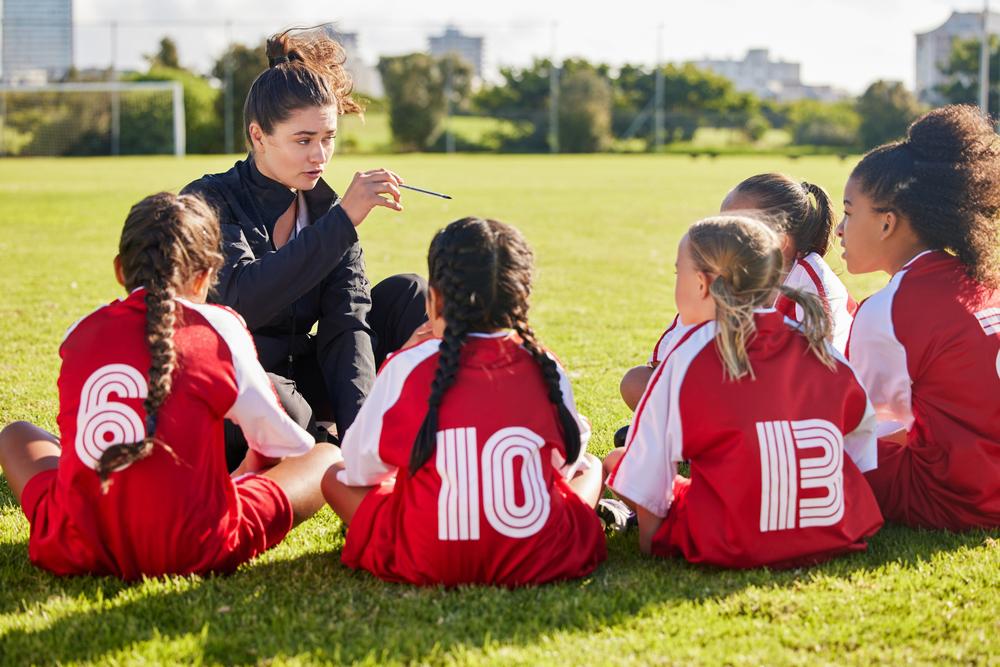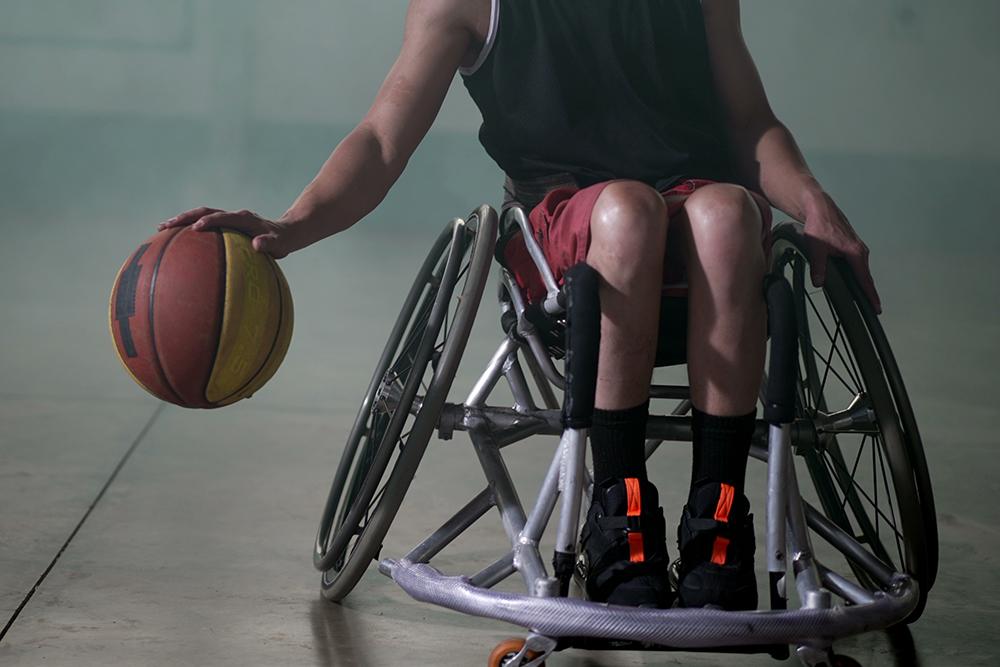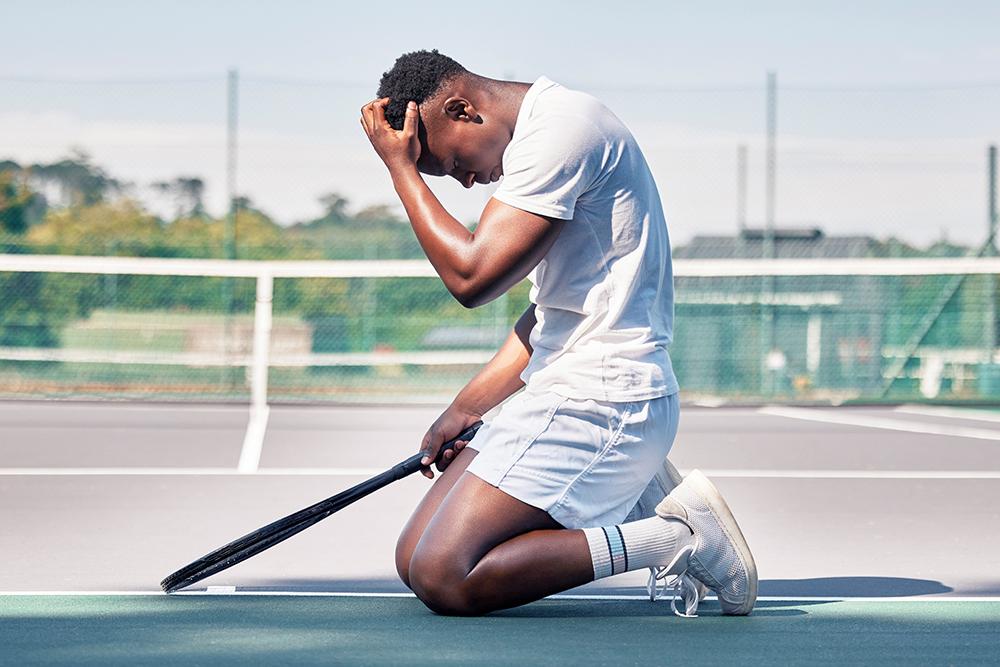 Parents have the tendency to want to ‘fix’ things for their athletes by offering their help or their opinion on challenging situations. But while that may feel necessary and satisfying, it’s rarely the best way to improve your athlete’s ability to be resilient.
Parents have the tendency to want to ‘fix’ things for their athletes by offering their help or their opinion on challenging situations. But while that may feel necessary and satisfying, it’s rarely the best way to improve your athlete’s ability to be resilient.
Board-certified family physician and TrueSport Expert Deborah Gilboa, MD, explains that helping your athlete change their outlook—how they view any situation—is key in building resilience. If you can help your athlete learn to shift their outlook to see opportunities and solutions in challenging moments on the playing field, they’ll be able to bounce back from tough situations in every area of their lives. Your goal, as Gilboa explains it, is to offer your athlete a different perspective on an experience, one that will allow them to consider their own outlook and reframe it.
Here are ways you can make an impact:
1. Stop Trying to Change the Narrative
“Parents often default to trying to change the narrative that their athletes have about their experience,” says Gilboa. For example, if your athlete tells you that they played poorly, your immediate reaction might be to tell them that they did great. According to Gilboa, “This is an understandable reaction, but it rarely helps the athlete change their outlook.”
2. Start with Validation
 Before you can help your athlete reframe an experience in a more positive or neutral light, you must start by validating their current outlook, says Gilboa. This doesn’t mean you need to agree with them—just that you need to allow them to express it and show that you’re actually listening. “A child isn’t going to be able to shift their outlook until you validate the outlook that they currently hold,” she says. “This doesn’t mean you agree. Parents tend to think that if they can point out another way of viewing the situation or explain it in a different way, the athlete’s outlook can change. But often, that makes an athlete feel unseen and misunderstood.” Instead, respond to your athlete in a neutral way, saying things like, “I hear that really has your attention,” or “I hear that you’re frustrated” to demonstrate that you’re listening, but not judging.
Before you can help your athlete reframe an experience in a more positive or neutral light, you must start by validating their current outlook, says Gilboa. This doesn’t mean you need to agree with them—just that you need to allow them to express it and show that you’re actually listening. “A child isn’t going to be able to shift their outlook until you validate the outlook that they currently hold,” she says. “This doesn’t mean you agree. Parents tend to think that if they can point out another way of viewing the situation or explain it in a different way, the athlete’s outlook can change. But often, that makes an athlete feel unseen and misunderstood.” Instead, respond to your athlete in a neutral way, saying things like, “I hear that really has your attention,” or “I hear that you’re frustrated” to demonstrate that you’re listening, but not judging.
3. Give Athletes Space as Needed
Knowing your athlete’s preferences is important when it comes to helping them improve their outlook, because some athletes need space to feel their emotions privately before sharing, while others are happy to talk through their feelings on the drive home from practice. As a parent, try to respect your child’s need for space, says Gilboa. If your athlete needs some quiet contemplation time or wants to talk about something else for a while, let them. Trying to force a conversation is likely to put your athlete on the defensive rather than being receptive. “Treat them not in the way you would like to be treated or how you wish they’d like to be treated, but how you think they would actually like to be treated after a rough experience,” Gilboa says.
4. Calm Yourself Down
 If your athlete shares a hard story—for example, if a coach or teammate said something hurtful to them—it’s natural to have your own strong emotions as their parent or guardian. However, your athlete needs a calm, level reaction from you, rather than an explosion. “Try not to allow yourself to spiral out of control,” says Gilboa. “It’s easy to get worked up at the idea of your athlete going through a hard time. But what they need from you is a calm, safe space to talk through their feelings.” You may need to take a few deep breaths, distract yourself by running through your to-do list in your head, or simply put on a song that you and your athlete both love and say you need a minute to get into a better headspace.”
If your athlete shares a hard story—for example, if a coach or teammate said something hurtful to them—it’s natural to have your own strong emotions as their parent or guardian. However, your athlete needs a calm, level reaction from you, rather than an explosion. “Try not to allow yourself to spiral out of control,” says Gilboa. “It’s easy to get worked up at the idea of your athlete going through a hard time. But what they need from you is a calm, safe space to talk through their feelings.” You may need to take a few deep breaths, distract yourself by running through your to-do list in your head, or simply put on a song that you and your athlete both love and say you need a minute to get into a better headspace.”
5. Ask for Permission
Before giving advice or sharing your opinion, make sure your athlete is receptive to it, and respect their feelings if they say no. “After you’ve validated their feelings about a topic, you can ask if you can share how you interpreted the situation they’re talking about,” says Gilboa. “What you’re really asking is, ‘Are you ready to consider a different outlook?’ And if they say no, then they’re just not ready to have that conversation.” There’s nothing to be gained by pushing your athlete to discuss something when they’re not in the right headspace to do so.
6. Consider What’s Not Being Said
When having these conversations with your athlete, always keep in mind that you may not know the entire context surrounding any situation. “For example, if your athlete is angry at a referee after a lot of calls against the team in a game, what they may not be mentioning is that they have a really good friend on the team who told them if there was another bad call from the referee, they were quitting,” says Gilboa. “In this case, your athlete may not be upset about the game itself, they’re actually upset because they think their friend may leave the team. You simply can’t know the full breadth of their experiences or their internal monologues.”
7. Be Vulnerable with Your Athlete
 “As parents and caregivers, you have the opportunity to show your athletes how you deal with challenges and negative emotions in your own life,” says Gilboa. “Being vulnerable with them not only gives them examples of how to verbalize their emotions, it also shows them how to work through them. Whenever we have a frustrating experience, we can verbalize our own genuine emotions, and call attention to those negative emotions. For example, if you’re stuck in traffic with your athlete and you start complaining about how the rest of your day is going to be ruined, catch yourself—and share that with your athlete. Say something like, ‘My words are really expressing a lot of my frustration and my fear.’ And then ask for help shifting your outlook. Ask your athlete to tell you a funny story or a joke.”
“As parents and caregivers, you have the opportunity to show your athletes how you deal with challenges and negative emotions in your own life,” says Gilboa. “Being vulnerable with them not only gives them examples of how to verbalize their emotions, it also shows them how to work through them. Whenever we have a frustrating experience, we can verbalize our own genuine emotions, and call attention to those negative emotions. For example, if you’re stuck in traffic with your athlete and you start complaining about how the rest of your day is going to be ruined, catch yourself—and share that with your athlete. Say something like, ‘My words are really expressing a lot of my frustration and my fear.’ And then ask for help shifting your outlook. Ask your athlete to tell you a funny story or a joke.”
8. Ask Open-Ended Questions
Once your athlete shares what’s bothering them, you can ask questions to try to change how they perceive a situation and help them come up with different solutions and viewpoints. Try to make your questions as open and non-judgmental as possible. “Ask questions where there isn’t an obvious right answer, and your athlete will feel more comfortable answering you,” Gilboa says. Her favorite question is simply: ‘Can you help me understand why this has so much of your attention?’ Be curious rather than trying to share your own opinion.
9. Understand How Athletes View Consequences
 Parents have the advantage of age: It’s easy to look back at our time in school and recall moments that we considered really difficult. Those moments, in hindsight, tend to be a lot less important than we thought they were, but your athlete doesn’t have that hindsight yet. “When a student thinks something has really huge consequences, take their feelings seriously rather than telling them it won’t matter in a week,” says Gilboa. “Younger kids tend to have outsized consequences. Parents have to earn their trust by showing that you see why things matter to them. Once they feel validated, you can help them understand why it might not matter as much as they think. And when it comes to high schoolers, err on the side of believing them when they tell you about any consequences that they’re concerned about. If those consequences don’t happen, you can both celebrate, but those older athletes should feel as though you truly believe them.”
Parents have the advantage of age: It’s easy to look back at our time in school and recall moments that we considered really difficult. Those moments, in hindsight, tend to be a lot less important than we thought they were, but your athlete doesn’t have that hindsight yet. “When a student thinks something has really huge consequences, take their feelings seriously rather than telling them it won’t matter in a week,” says Gilboa. “Younger kids tend to have outsized consequences. Parents have to earn their trust by showing that you see why things matter to them. Once they feel validated, you can help them understand why it might not matter as much as they think. And when it comes to high schoolers, err on the side of believing them when they tell you about any consequences that they’re concerned about. If those consequences don’t happen, you can both celebrate, but those older athletes should feel as though you truly believe them.”
10. Beware of Toxic Positivity
While you want to help your athlete shift away from a negative outlook about a challenging situation, it’s important to avoid falling into the ’toxic positivity’ trap where every experience needs to be reframed as positive. Some situations are simply neutral, or may remain negative, even with a solution-oriented outlook. “You don’t have to always be positive,” says Gilboa. “Preteens and teens in particular will find that tendency annoying, difficult, and inauthentic.”
11. Ask Your Athlete What They Need
“When your athlete starts to talk to you about how they’re feeling, don’t assume you know what they want from you,” says Gilboa. “First, thank them for sharing with you. Then, ask: ‘Are you hoping for empathy, advice, or intervention?” And however they answer, respect that decision.
________________________
Takeaway
As a parent, you want to help your athlete get through challenging situations. But rather than trying to fix their problem or offering your own opinion, start by listening to your athlete, validating their feelings, and asking open-ended questions to help them reframe the challenge and come up with their own solution.



